 Your new post is loading...
 Your new post is loading...
Reputation is everything. And on the internet, that couldn't be more true.It's important to always know what people are saying about you -- whether it's your customers, your competitors, or the press. And on any given day, it can be tricky to keep up with what your audience is sharing across a variety of social media platforms. So, we've rounded up some of the best free social media and brand monitoring tools from around the vast web of social networks. Nearly all of these tools are free, but some offer paid versions with more features and capabilities. Let's dive into each one -- and see if you want to test them out today....
Last month three of Under Armour’s celebrity endorsers — Stephen Curry, Misty Copeland, and Dwayne “The Rock” Johnson — publicly criticized the company’s CEO, Kevin Plank, for making a favorable statement about President Trump. This was an unusual PR challenge. Normally, executives worry about their endorsers behaving in ways that reflect poorly on their companies, such as getting in trouble with the law. They don’t expect to be reprimanded by the very people they’re paying to market their products. In today’s hyperpartisan environment, companies are facing backlash from in-house employees, too. As detailed in this report, one Oracle staffer posted a letter explaining that he had quit his job because the company’s co-CEO, Safra Catz, joined Trump’s transition team. And after IBM chief Ginni Rometty congratulated Trump on his election win, staffers circulated an online petition asking her to allow them to refuse to participate in projects that violate civil and constitutional liberties. It now has more than 2,000 signatures. What should companies do when insiders publicly condemn them? Based on my experience training communication executives on how to handle such situations, here’s what I recommend....
In Trump We Trust — .com, that is.
Not your politics? Maybe check out ThrowOutTrump.com.
Actually, they're both empty websites, what you call parked domain names: bought and paid for, but not used.
More interesting is that they both belong to the same guy — Donald J. Trump.
A big hat tip to CNN, which had the idea to search for all websites registered by the Trump Organization and came back with a list of more than 3,000 — all the way back to the original DonaldJTrump.com, registered in 1997....
If there is one entrepreneur who knows the real value of building social relationships, and how they can extend into the world of social media, it’s health and fitness mogul Andy Frisella: founder of Supplement Superstores, Paradise Distribution, and the renowned fitness brand 1st Phorm International. These brands, among others, bring in more than $100 million a year.
How?
He has built a true community....
2016 saw its fair share of corporate public-relations mishaps, but some were more cringeworthy than others. To be sure, the PR crises in certain cases weren't all that bad compared with the serious business missteps that precipitated a few of them, but the fact remains that there is always a better and a worse way to talk to customers and the public when something's gone wrong. These were three of the year's most egregious gaffes, and what companies can learn from them heading into 2017
Customer service today means serving customers "in the red zone." Besides my former beloved 1986 red Honda Prelude, most red things for me fall into a negative category. Think sunburn, red alert, STOP sign, SOS.
The red zone is different for different people and different every time. And that’s the whole point. Sometimes it’s because expectations are set so high with a direct line and then fall short and disappoint, as in my London business travel experience. And sometimes it’s because the bar is set so low and a brand still fails to make the cut, like the slow moving lines at the Post Office and just as you’re the next person (and of course pressed for time), the next open window closes so the agent can take a break... But it’s always in-the-moment and real for the customer.
In other words, customers are normal, garden-variety social, emotional creatures that now have a bullhorn to broadcast their (dis)pleasures with your brand. Humans have always been social, emotional creatures so there’s nothing new here. What is new are the channels and media we have access to at any given point on any given day and the larger pool of connections we can stay in touch with via our social networks/communities. And still there are so many brands that fail to incorporate this new reality into strategy, operations and customer service. In the latest study conducted by Twitter, they found that by responding to customers on Twitter, customers are 44% more likely to share their experience, 30% more likely to recommend the brand, and the responsiveness will positively increase CSAT by 1 point....
Scholars in public relations have contended that organization-public relationship (OPR) quality has multiple dimensions, including the oft-cited list of trust, satisfaction, control mutuality, and commitment. The concept of OPR quality is assumed to be positive (Heath, 2013), which nevertheless does not describe relational problems in reality. In this blog post, I introduce an additional side of OPR quality—distrust, and how it differs from trust. Distrust is often considered as simply the opposite of trust by organizational researchers and excluded as a component of OPR quality in the public relations literature. However, distrust is not the absence of trust. For example, an employee may have both low levels of trust and distrust in his or her colleagues who resemble casual acquaintances in the organization. They only occasionally cross paths with these coworkers. They are not confident in or very watchful of these relational partners. Also likely the employee could feel both high levels of trust and distrust in his or her superiors. They trust the management, as representatives of the organization, in some aspects but distrust in other aspects. In an employee survey (N=583), I tested distrust as a new dimension of OPR quality (Shen, in press). I found that both distrust and trust were distinct from each other. The study suggested that OPR quality is not inherently positive. Employees may perceive sinister intentions of the organization’s conduct. Even those who highly trust their employing organizations do not necessarily perceive low distrust, and vice versa. Employees could feel confident about the organization’s capabilities—trust, while at the same time they are skeptical about whether the organization keep employees’ interests in mind when making decisions—distrust....
IAn instant is all it takes to threaten your business's sterling reputation online. You might have had an off day or the misfortune of dealing with an ornery customer, but it's almost inevitable that you'll come face to face with a negative online review at some point in your career. But, as Adrienne Weissman, CMO at G2 Crowd, recently pointed out, negative reviews aren't all bad. Some 70% of Americans read reviews before making a purchase, and those who seek out negative reviews tend to be more engaged and are 67% more likely to make a purchase. Plus, 68% of people trust a company more when their reviews are a mix of good and bad. Of course, the key to making the best of a bad review lies largely in your response. That means you need to be able to find reviews (both good and bad) as they pop up. That's definitely more social media monitoring than one person can handle... And that's where reputation management tools come in. The following five reputation management tools are some of the best on the market for tracking mentions, discovering influencers, and managing online reviews as they happen....
Take 2010, when BP was confronted with one of the biggest oil spills in history. It appeared that the organization waited to reveal all the facts until they knew that the spill had become unstoppable. Or 2015, when the U.S. Environmental Protection Agency and the California Air Resources Board uncovered widespread cheating by Volkswagen on emissions standards – something Michael Horn, president and CEO of Volkswagen America, was alerted to a year earlier but remained silent. Even when the EPA confronted the company with their findings, Volkwagen missed the opportunity to communicate first. And more recently, The Wall Street Journal revealed a culture of secrecy at blood-testing start-up Theranos and questioned the effectiveness of the technology driving their operation, leading to a federal investigation.
In each case, the organization failed to self-disclose a crisis, and as a result, each faced enormous negative publicity that continues to draw critical attention from a broad public. Even Hollywood is interested: movies have been made, or are in the works, about all three scandals. The longstanding impact of a failure to acknowledge a problem cannot be overstated.
How should companies handle a crisis differently? Our research focuses on an alternative approach, one that is referred to as “stealing thunder.” It involves self-disclosing crises and major issues before media gets hold of the story. Earlier studies on stealing thunder have found that self-disclosing organizational crises increases the credibility of organizational spokespersons. When an organization breaks the news about incriminating events, these problems will also appear less severe. In addition, organizations that steal thunder are considered more reliable and consumers are more inclined to continue purchasing their products. Our recent study adds to these findings by examining if self-disclosing an organizational crisis may be as effective as it is because old news is considered no news. When self-disclosing incriminating information, individuals will perceive the subsequent negative publicity as old news, and hence, pay less attention to it....
What's a little e coli among friends? That's the question US fast-casual dining chain Chipotle will soon be asking its best customers. After publicly eschewing the idea of launching a customer loyalty programme last year, Chipotle executives said on an earnings call last week that they aim to stem the flood of frequent diners abandoning the chain with - wait for it - a loyalty programme. Though the programme is likely to be temporary, Chipotle hopes it will reignite customer passion for bowls and burritos. The problem: Chipotle executives still seem to display a fundamental misunderstanding of the purpose of loyalty programmes.
The announcement was one of the only positives in an earnings call that can only be described as apocalyptic: same store sales fell nearly 30% in the first quarter of 2016 and the company posted a net loss of $26.4 million. The company has tried everything to pull out of the free fall: giving away millions of free burritos, BOGO offers, national advertising campaigns; nothing has worked. Money quote from reporter Virginia Chamlee over at eater.com:
"The aim is to target the most loyal Chipotle consumer — i.e. the one who visits 25 or more times per year. The company saw the largest declines among its top loyal (25+ visits a year) and its 'light' consumers (those that visit two to five times per year). Noting the decline in visits amongst its once most-loyal customers, [Chief Marketing and Development Officer Mark] Crumpacker said the company would love to get that 'habit' back up. "We do believe it's beneficial to us to get people back in the habit of visiting Chipotle [as often as they used to]."...
Since 2012, Cohn & Wolfe has studied authenticity as a guiding principle and business practice. Each year, our research reveals more insight on the strategic power of authenticity and its unique opportunity to build reputation.
Cohn & Wolfe has discovered a huge authenticity gap in the eyes of global consumers. With 75 percent of consumers surveyed in 14 markets believing that companies are not open and transparent, it’s clear that brands have a credibility problem.
Our 2016 findings reveal that cynicism towards brands is highest among Western European countries, while high growth / low per capita GDP countries recognize authenticity in brands the most.
Across global markets, approximately one in five consumers finds brands “Open and Honest.” At 23 percent, the US places just above the global average. In Western Europe, a mere 5 percent of consumers in Sweden consider companies “Open and Honest,” while the UK, France, Germany and Spain all match the same low level at 7 percent.
Brazil, while generally higher than Western Europe, is still lower than the US at 19 percent.
Even in China and Indonesia, where consumers are least pessimistic about brand authenticity, only about a third of the population (36 percent and 35 percent, respectively) consider companies “Open and Honest.”
The opportunity for businesses to close this gap is staggering....
No matter how well you prepare, sometimes things just go out of your control. It is not always possible to prevent a crisis. When it comes to PR campaigns, learning from your mistakes can be too costly. The trick should therefore be learning from other people’s mistakes.
According to the First Research study, the U.S. public relation industry is estimated to be at $10 billion, with above 7,000 U.S. firms in action in 2013. Still a large number of businesses suffer the adverse effects of PR disasters. Why is it so? Let’s take a take look at the factors that lead to PR disasters
Yesterday I had the pleasure of attending my seventh Edelman Trust Barometer launch event in Toronto. This year’s results are some of the most interesting I’ve seen, highlighting a disparity in trust amongst what we call the “informed” public and the mass population, and the ongoing failure of businesses to live up to the expectations that people have of them when it comes to societal good (you can see the full results on SlideShare).
One of the interesting notes in this year’s Canadian Trust Barometer results was that trust in social media has fallen over the last year. In fact, social media was the only one of the five media types we examined to experience a decline in trust....
|
When last month’s “Communicator of the Year” can turn into this month’s PR disaster, there’s a lesson for any brand on the perils of flubbing a corporate apology. Any brand can go from hero to zero.
Much has been written in the last week about the missteps of United and its CEO. Given that it was PRWeek that so recently awarded Oscar Munoz as “Communicator of the Year”, I thought the PRWeek postmortem was particularly interesting:
“No company or brand can rest on its laurels when it comes to its reputation. Protecting and enhancing it is a 24/7, 365 days a year undertaking....
But to little old me, a sincere apology goes a long way. When I sense genuine remorse, it means a lot to me -- perhaps because it's so rare, at least in my experience. Combined with my nerdy affection for all things marketing, that sentiment applies to brand apologies, too. It's not so much that I think, "Wow, that means a lot to me," but more like, "Wow, that company really nailed saying, 'Sorry.'" So, who's done it best? We rounded up some of our favorite brand apologies to inspire you next time you make a mistake -- and need to admit your wrongdoing....
Marketers may find themselves faced with a timely dilemma: What to do when the leader of the free world calls out your brand—or even your CEO—by name in a tweet? A year ago, the mere suggestion of that would be preposterous. Today, that’s not something outside of the realm of possibility. The question is: How political do brands need to get in 2017? While the retail world may be the current battleground between the White House and the private sector, consumer packaged goods, tech and business-to-business leaders could be next. This is a new day in American politics, and we are just one month into the Trump presidency. Brands must ask themselves, where do we take a stand, why and to what end? And if I do take a stand, what risk do I take on with angering possibly half of my consumers? While there are perhaps no easy answers, and the rule book has yet to be written, there are a few suggestions:
Should executives respond when a tweet or unexpected event touches their business or rouses their employees and customers? There are risks and rewards to CEO activism. Weber Shandwick, where I serve as chief reputation officer, and KRC Research surveyed 1,050 senior executives and 2,100 consumers across 21 markets worldwide to find out what people expect from corporate brands. Our research shows that the two biggest factors that influence respondents’ opinions about companies are what customers say about them (88%) and how they react in crisis (85%). In fact, how a company responds to a controversy, including how quickly, is more important in driving public perception about the company than what is said about that company in the media (76%), by employees (76%), on the company’s website (68%), by spokespeople (61%), or in the company’s advertising (61%)....
Like our favorite celebrities, brands aren’t perfect. Bad PR is a part of life because people aren’t perfect and the companies they run follow suit. Recently New Balance became the first company to publicly back Donald Trump, a very divisive figure for reasons you would have to be sleeping under a rock to not know already. Priding themselves on being a brand that develops their products on American soil, New Balance saw Trump’s election as an opportunity for business growth and one that would bring more jobs to Americans. However, that is their opinion and not some universal truth. Politics is a tricky place for a brand to choose sides when there are so many issues that people take seriously. Thousands of sneakerheads were outraged at New Balance’s political stance. So outraged that they denounced their love for the brand all over social media by literally posting pictures of them throwing the sneakers away and burning them. Things really spiraled out of control when neo-nazis procclaimed the sneaker to be the official sneaker of white people. Yes, that really happened. Obviously publicly backing a divisive president-elect has some serious downsides with the public, so what do we do as consumers after our favorite brands choose to do something against our personal values?...
The President-elect's supporters are threatening to boycott Pepsi (PEP) over fabricated statements circulating on social media. Twitter users, many citing debunked news articles, claim PepsiCo (PEP) CEO Indra Nooyi told Trump fans to "take their business elsewhere. "Sites designed to trick people, including Truthfeed and Gateway Pundit, published the fake quote while encouraging readers to stop buying Pepsi's products. Gateway Pundit also incorrectly claimed PepsiCo's stock plunged 5% because of the comment that Nooyi never actually made. Nooyi never told Trump's supporters that Pepsi doesn't want their business and she even congratulated the president-elect on his victory. But she condemned the ugly rhetoric of the campaign....
The Samsung Galaxy Note 7 debacle is a master class in how not to handle a crisis. Much will be investigated in the months ahead. But what I find particularly interesting is how Samsung communicated what was happening at each stage of the crisis.
This weekend, the US DOT banned the Galaxy Note 7 on all US flights, categorizing the phones as “forbidden hazardous material.” It doesn’t get much clearer than that. Yet, just a few days earlier, Samsung portrayed the situation as “temporarily adjusting the production schedule to ensure quality and safety matters.”
The gap between “forbidden hazardous material” and “temporarily adjusting the production schedule” is a massive chasm. A few weeks earlier, Samsung similarly described a “global product recall” as an “exchange program.”...
Olympian Ryan Lochte, who was dropped this week by major sponsors including Speedo and Ralph Lauren, has found a brand willing to take him on. Pine Bros. Softish Throat Drops signed an endorsement deal today with Lochte, who will appear in commercial and print ads for the brand. The swimmer thanked the company in a tweet today. Lochte embellished the story of what he claimed was a robbery at gunpoint with fellow swimmers at a gas station in Rio de Janeiro during the Olympics earlier this month, lying about it to NBC's Billy Bush and Matt Lauer (and inspiring some shade from the likes of Al Roker, Stephen Colbert and John Oliver, who all called him out for his behavior). Lochte apologized to Lauer in an interview that aired on the Today Show on Monday, saying that he "over-exaggerated" the events of that night. Lochte's ads for Pine Bros. will feature the tagline, "Pine Brothers Softish Throat Drops: Forgiving On Your Throat," just as the company—and Lochte, himself —is asking the public to forgive him. ...
Never ruin an apology with an excuse." – Ben Franklin
In less than 24 hours, two of the biggest stories in the world involved some kind of "apology" for offensive behavior and/or lying. Last night in Charlotte, North Carolina, the notoriously unrepentant Donald Trump shocked observers by expressing "regret" for words that "may have caused personal pain." And this morning Ryan Lochte issued a widely criticized apology for "not being more careful" with how he described an incident in which he lied about being held up at gunpoint in Rio de Janeiro.
Neither of them qualified as a true apology since they both offered an excuse for their behavior, failed to give a detailed account of what happened, failed to acknowledge or specify the hurt and damage they’d caused, and didn't take responsibility for the situation.
A proper apology is "an exercise in honesty, accountability, and compassion," says interfaith minister Lauren Bloom, the author of The Art of the Apology. Of course, it's difficult and nerve-wracking and fraught with tension. But it's the right thing to do. So above all, be sincere: "It's the essence of an apology."...
So people don’t trust brands – but what does that MEAN?
That they think you’re overcharging them?
That they’re worried you’ll lose their credit card information to hackers?
That they wouldn’t ask you to watch their cocker spaniel for the afternoon?
Mistrust comes from a disconnect between what you say and what you do.
A whopping 78% of people think that in general, brands are NOT open and honest. In fact, only 1 in 4 people thinks that brands actually do what they say they’re going to do – a level of mistrust typically reserved for badly behaved toddlers and black market organ dealers.
This doesn’t mean you or your business have necessarily made people feel misled – but it means you still have to work a lot harder to make up for the damaged caused by brands in general....
The Republican frontrunner met with the editorial board on Monday morning. The full transcript follows at the link above: FREDERICK RYAN JR., WASHINGTON POST PUBLISHER: Mr. Trump, welcome to the Washington Post. Thank you for making time to meet with our editorial board. DONALD TRUMP: New building. Yes this is very nice. Good luck with it. RYAN: Thank you… We’ve heard you’re going to be announcing your foreign policy team shortly… Any you can share with us? TRUMP: Well, I hadn’t thought of doing it, but if you want I can give you some of the names… Walid Phares, who you probably know, PhD, adviser to the House of Representatives caucus, and counter-terrorism expert; Carter Page, PhD; George Papadopoulos, he’s an energy and oil consultant, excellent guy; the Honorable Joe Schmitz, [former] inspector general at the Department of Defense; [retired] Lt. Gen. Keith Kellogg; and I have quite a few more. But that’s a group of some of the people that we are dealing with. We have many other people in different aspects of what we do, but that’s a representative group....
This year’s Trust Barometer shows something amazing. The biggest increase in trust hasn’t been in the media or NGOs or the government… it’s been in the private sector.
The general public wants businesses to lead the way when it comes to societal issues. More specifically… Edelman says the data shows people want CEOs to be more visible.
They want to know the person leading a business. They want to know their values and where they stand on social issues....
|



 Your new post is loading...
Your new post is loading...






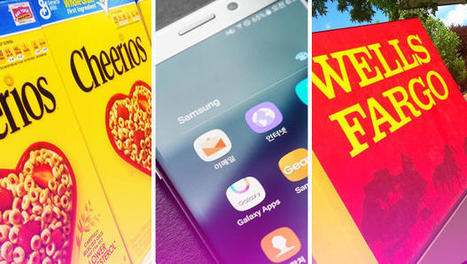




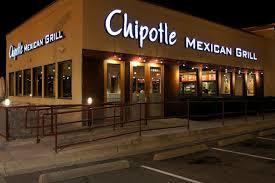
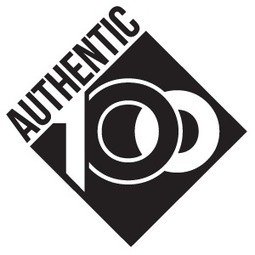
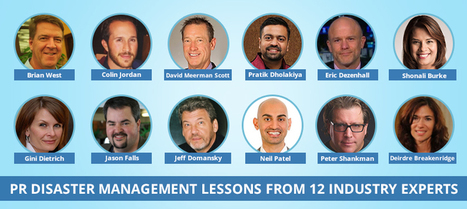



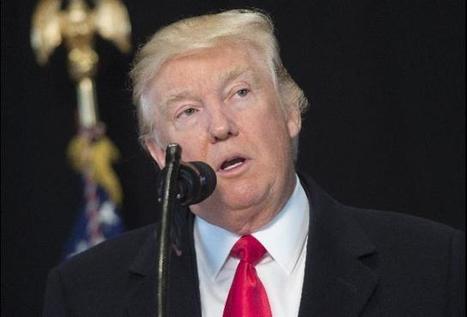

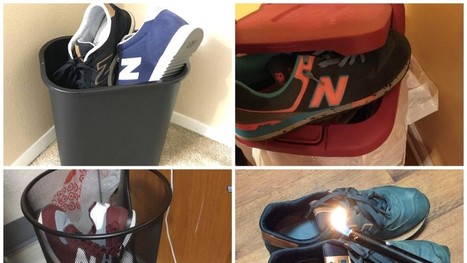






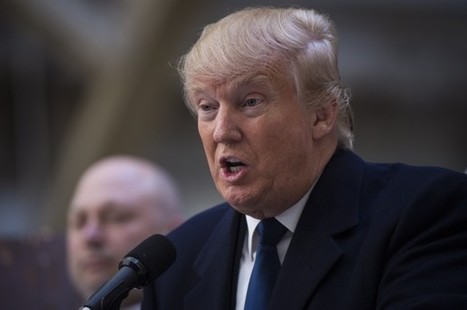
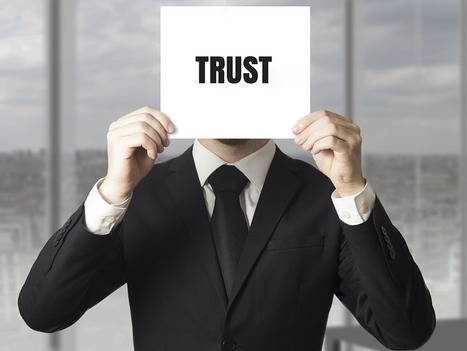





Check out these free social media and brand monitoring tools to take your social game to the next level.